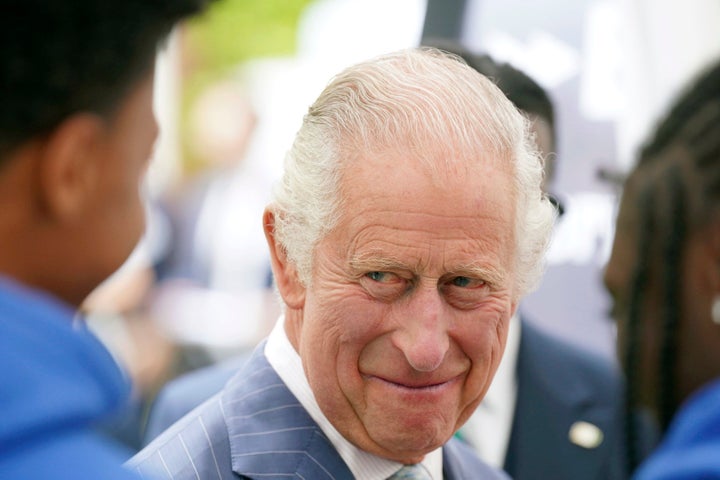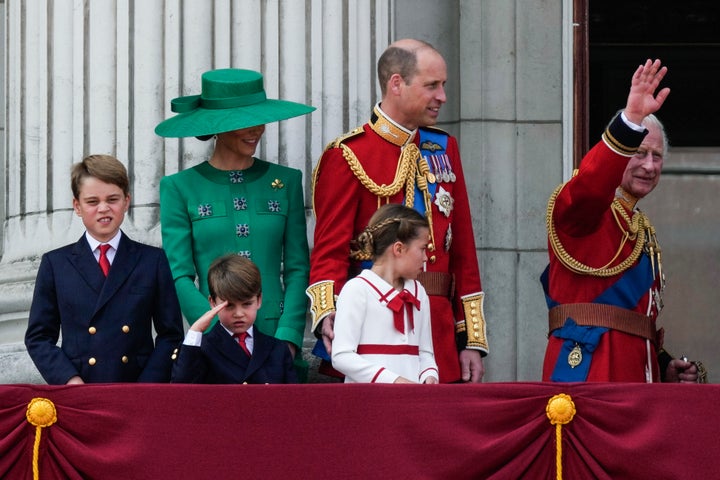
King Charles is expected to receive a hefty increase in his annual sum from the taxpayer in 2025, government plans have revealed.
The monarch – who ascended the throne last September – reportedly planned to reduce the amount the royal family cost the public purse when he was the heir apparent.
However, now he’s actually been crowned, it seems the firm is about to cost more than ever.
There’ll be an increase of 45% funding for the royals from 2025, according to details of a royal funding review from the treasury, released on Thursday.
Here’s what you need to know.
Why does King Charles receive funds from the taxpayer?
The monarch receives an annual budget from the taxpayer known as the sovereign grant.
The amount of money put into the grant each year is proportional to the amount the royal family’s national property portfolio (the crown estate) makes in profit.
This is part of a formula system announced by David Cameron’s government in 2011, which removed the parliament’s control over royal funding.
The percentage of profit which goes back to the royal family in the form of the sovereign grant is decided by the three royal trustees: the PM, the Chancellor and the king’s financial adviser, also known as the Keeper of the Privy Purse.
Since 2017, the sovereign grant has received 25% of the estate’s net profits annually – but that’s about to change.

Why is the Royal Family getting more money?
In 2024, the sovereign grant will remain at the same level as this year, meaning it will receive £86.3 million.
But, in 2025, it will go up to £124.8 million, and in 2026 it will climb again to £126 million.
This is because the crown estate has earned more money recently due to the sale of leases for offshore farms – and the anticipated profits are expected to more than double from £443 million this year to more than £1 billion next year.
The sovereign grant is also two years in arrears.
So, the Treasury also announced the King would be getting a smaller cut of these profits than usual in the sovereign grant.
Instead of receiving 25% of the net profits of the crown estate, the grant will be cut to 12%.
A the estate’s profits are going to rise so exponentially, if the 25% rate had continued, the monarchy would have eventually received £260 million a year.
The treasury claimed: “Cutting the rate to 12% is expected to reduce the sovereign grant by £24m in 2024-2025… This money will instead be used to fund vital public services, for the benefit of the nation.”
Still, this means the King is receiving a smaller portion of a larger overall lump sum.
Why has there been backlash?
The cost of living crisis has been rumbling on for more than a year now. Although inflation is now falling, it is still at 7.9% in the UK – much higher than the Bank of England’s target rate of 2%.
Interest rates are also at a high of 5%, meaning both people with a mortgage and those who rent from mortgage-owners are struggling with the basic cost of living.
Meanwhile, Graham Smith, leader of the anti-monarchy group Republic, told the Guardian the Treasury’s announcement was “grossly misleading”, by suggesting Charles was taking a pay cut.
For context, the sovereign grant was at £31 million when it was introduced in 2012 and 2013 – almost a £100 million less than the money it’ll receive in 2025.
And a clause in the Sovereign Grant Act means the amount of money handed to the monarch can’t decline, even if the crown estate’s profits fall.
It’s also worth remembering that Charles was expected to slim down the monarchy due to the backlash over the ongoing costs from the monarchy.
But between May 2022 and May 2023, there was a costly Platinum Jubilee for the Queen, followed by her state funeral, and a lavish ceremony for King Charles’ coronation.
And, in January, Buckingham Palace wrote to the government saying the King didn’t want to benefit for the boom in wind farms.
Meanwhile, other reports have found that the UK royal family is already more expensive than other European monarchies.
What has the Palace and the Treasury said?
Buckingham Palace told The Guardian that the sovereign grant had remained at £86m for years (dating back to 2020), and this represented a real-terms cut against inflation – a term used by many striking public sector workers calling for pay rises.
The Palace also said this increase would be “temporary” for the financial years of 2025 to 2027, for the renovation of the Buckingham Palace, which has been placed at £369 million.
A Treasury spokesperson, Justina Crabtree, said: “The grant has been largely unchanged since 2020 and this temporary increase covers the remainder of the Buckingham Palace refurbishment. We will review the grant in 2026, expecting to bring it back down in 2027.”
Chancellor Jeremy Hunt also claimed the monarchy was a source of “immense national pride and constitutional strength, widely admired around the world”.
He added: “For almost 300 years, kings and queens have surrendered the profits from the crown estate to the British people, and in return the government has provided a fraction of that to properly support the King in undertaking his official duties.
“The new Sovereign Grant rate reflects the unexpected significant increase in The Crown Estate’s net profits from offshore wind developments, while providing enough funding for official business as well as essential property maintenance, including completing the 10-year re-servicing of Buckingham Palace”.
